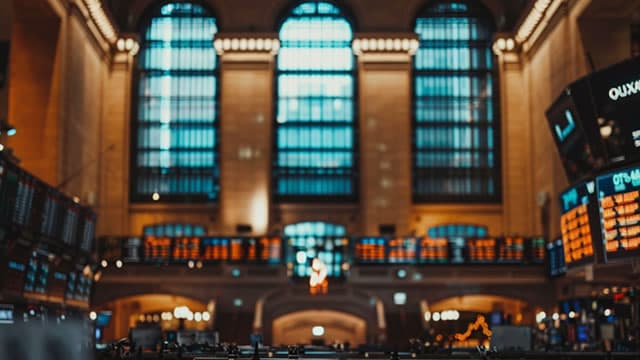加载中...
共找到 7,892 条相关资讯

Despite recent volatility and bearish sentiment, current market pessimism is exaggerated. Neutral observers expect uneven US GDP growth and mention tariffs and inflation as realistic concerns.

Optimism among America's small businesses fell last month amid labor and profit headaches. That's according to the October edition of the National Federation of Independent Business (NFIB) Small Business Optimism Index, released Tuesday (Nov. 11), and showing a 0.6 point decline in October to 98.2.

Prediction markets are getting a fresh dose of legitimacy. Bernstein now calls them a viable asset class.

Kevin Hassett, director of the National Economic Council, joins CNBC's 'Money Movers' to discuss how he's thinking about the economic impact of the government shutdown, when to expect economic data releases, and much more.

The Nasdaq 100 enjoyed one of those well-timed Friday afternoon rallies (1.9% off morning trading lows) to somewhat ease concerns. The S&P 500 fell 1.6% (up 14.4% y-t-d), and the Dow declined 1.2% (up 10.4%).

U.S. firms were shedding more than 11,000 jobs a week through late October, payroll processor ADP said on Tuesday in its latest real-time estimate of job market trends.

Wall Street wants you to believe that a year-end stock-market rally starts now.

Large companies say they are likely to add far fewer seasonal workers than in other recent years.

Rather than focusing on low multiples to earnings, value-stock selection should include quality factors supporting long-term growth, according to Warren Koontz of Jennison Associates.

Analysts at Goldman Sachs wrote on Monday the number of U.S. nonfarm payrolls—a measurement of public and private employment—likely declined by 50,000 in October, marking what would be the largest single-month decline since late 2020. Economists surveyed by Dow Jones expected a steeper decline in October, with estimates of 60,000 jobs shed and a projected increase in the unemployment rate to 4.5%.

Banks stockpiled less money for troubled loans during the most recent quarter despite fears over bad-debt “cockroaches.”
@CharlesSchwab's Nathan Peterson believes the U.S. government reopening will offer a new base of support for markets, though he warns investors to watch for a forming rotation. As companies like Nvidia (NVDA) and CoreWeave (CRWV) sell off, he explains the move out of tech may be used to support market breadth in the broader indices.

CICC's Chief Strategist Yanliang Miao says abundant liquidity will benefit the Hong Kong market in 2026. Despite seeing limited upside potential for the main equity index, Miao says structural opportunities remain in booming sectors.

Peter Tchir, head of macro strategy at Academy Securities, sees the chance for a “significant 5 to 10 percent pullback” as he runs down the issues that markets still face as the US shutdown comes closer to an end.

US private payrolls fell by an average of 11,250 jobs per week in the four weeks ended Oct. 25, according to data released Tuesday by ADP Research. Enda Curran reports on Bloomberg Television.

Ed Yardeni, Yardeni Research president, joins CNBC's 'Squawk on the Street' to discuss market outlooks, what's driving positive earnings, and much more.

Fund managers dump losers now to offset gains — giving value investors an opportunity.

The Wall Street maxim that markets climb a wall of worry seems to apply to the bond market this year. Notably, all the major categories of US fixed income are posting year-to-date gains at the moment.

As seen from the table, the first week of November has given back much of the equity market's October gains (all in the case of the small cap Russell 2000) causing investors to wonder if this is the beginning of a long overdue correction, or something more insidious, such as the anticipation of an oncoming Recession (the incoming macroeconomic data have shown economic softness). Perhaps the now record length of the government shutdown played a role.

Tech stocks drag the S&P 500 and Nasdaq lower as AI optimism fades; Dow gains on strength in healthcare, staples, and blue-chip names.